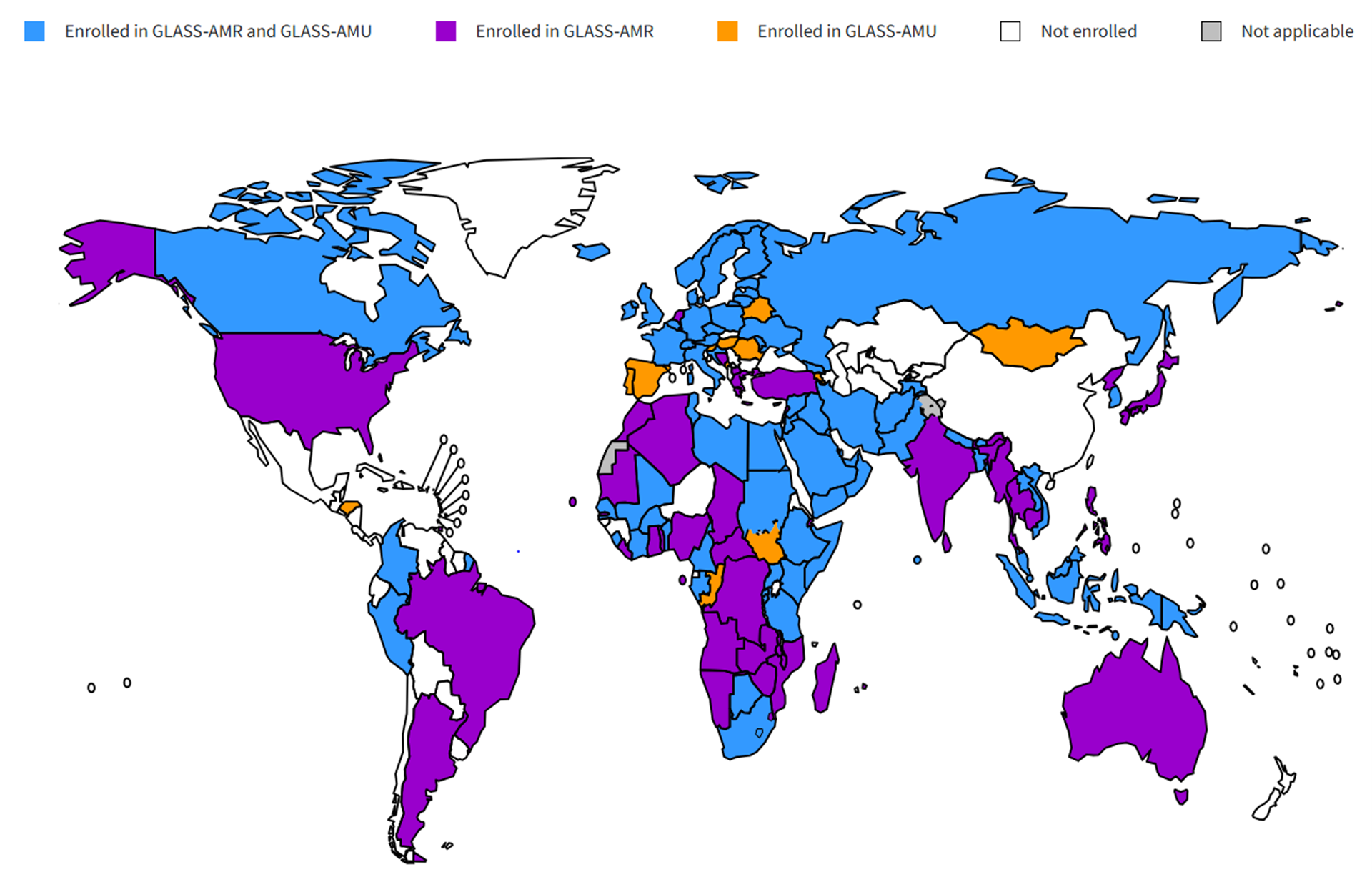The Global Health Observatory
Explore a world of health data
The 2015 global action plan on antimicrobial resistance stresses the need to strengthen the evidence base on antimicrobial resistance (AMR) and use (AMU) through surveillance and research. Comprehensive and quality-assured data on the global and national incidence, prevalence, and patterns of AMR in bacterial and fungal infections, as well as the quantity and way in which antimicrobials are used, are essential to address AMR. These data are needed to understand the extent of the problem and its drivers, detect trends and emerging threats, define targets for reduction and measure the impact of interventions.
GLASS is the first global surveillance system to collate and report official national data on AMR and AMU in humans. Since its inception in 2016, GLASS has expanded in scope and coverage and comprises several modules. These include i. routine surveillance of AMR in common bacterial and fungal pathogens; ii. periodic nationally representative surveys to estimate AMR and its attributable mortality; iii. early detection of novel (emerging) AMR; and iv. surveillance of AMU in the community and health care settings.
Through collation of surveillance data, GLASS informs the Sustained Development Goal (SDG) indicator for AMR (3.d.2), which monitors the proportion of bloodstream infections due to Escherichia coli resistant to third generation cephalosporins and due to methicillin-resistant Staphylococcus aureus (MRSA). It also informs the antibiotic use target that was endorsed by Member States at the 2024 United Nations (UN) General Assembly High-level Meeting on AMR: by 2030, at least 70% of global human antibiotic use should be with WHO Access antibiotics (i.e., 70% Access target).
As of December 2024, 141 countries, territories and areas (CTAs) committed to contribute data to GLASS on AMR (GLASS-AMR) and/or antimicrobial use (GLASS-AMU) (map below). A comprehensive summary of the data at the global, regional and CTA levels is available on the GLASS dashboard.
Countries enrolled in GLASS

Related indicators
Related content

